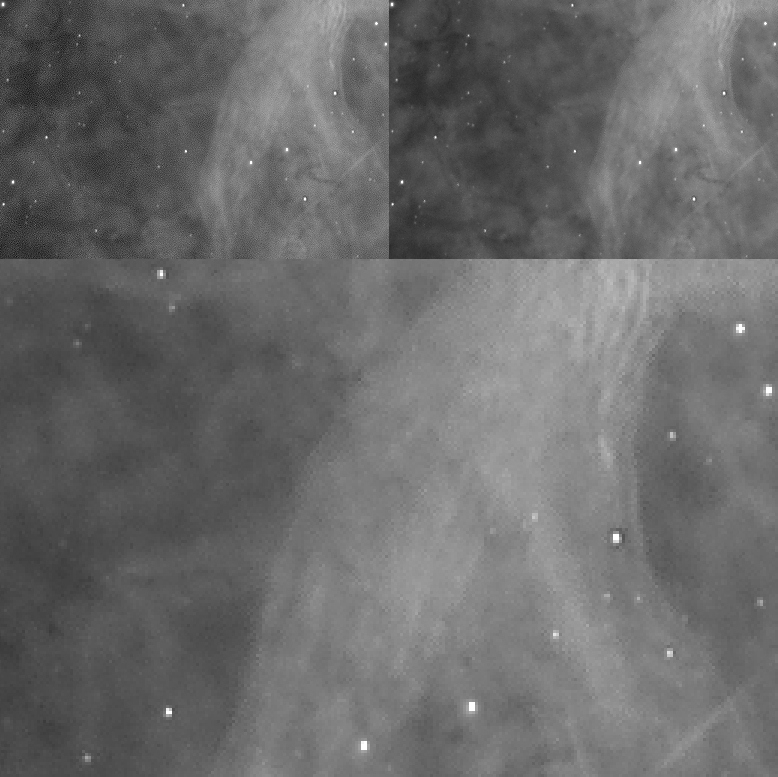- Usage
- Evaluating the result
Evaluating the result

Given StarTools' general design goal of exploiting psychovisual limitations of the human visual system, there are some important things to take note of when evaluating the result.
Specifically, the module exploits "useful" noise grain (by modelling it as quantization error in the signal) to retain and convey more detail in areas that are too "busy" for the human visual system to notice, without the result appearing noisier. The actual "useful" noise grain, much like dithering, however may be visible when zoomed in at scales beyond 100%.
The value of the module's ability to shape noise grain in this way, becomes particularly apparent when combining this ability with the output of StarTools' deconvolution module. The latter module can be "overdriven" to trade increased detail for increased (though perceptually equalised) fine grain noise "artifacts". The magnitude of the noise grain is subsequently recovered, modeled and shaped for use as quantization error diffusion in the final denoised image.
Of course, if so desired, using more aggressive parameter settings will progressively eliminate such quantization error diffusion, and yield a smooth image.
You may also be interested in...
- L. B., United States (under Testimonials)
I'm relatively new to image processing and just wanted to say how straight forward and powerful StarTools is.
- Creating a suitable star mask (under Usage)
This time set 'Old Mask' to 'Add New To Old' to add the newly generated mask to the mask we already have.
- Mouse controls (under Interface)
As of 1.7, enhanced mouse controls are implemented; Zoom in.
- Zooming, panning and scaling (under Interface)
Even the way StarTools displays and scales images, has been created specifically for astrophotography.
- Usage (under Color)
A second unique feature of StarTools, is its ability to process luminance (detail) and chrominance (colour) separately, yet simultaneously.
